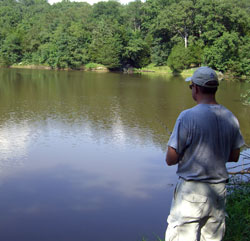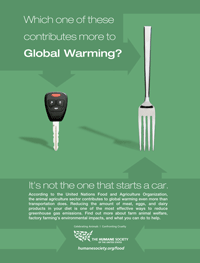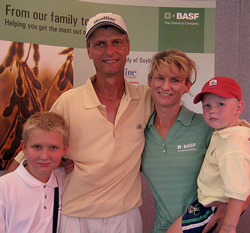 I interviewed two of my favorite people at the Ag Media Summit and have saved those interviews for this week’s program. First up, you’ll find Jerry Harrington, Pioneer Hi-Bred. He talks about how he helps agricultural journalists connect with agronomists so they can get the word out and help producers, “grow more corn and soybeans.”
I interviewed two of my favorite people at the Ag Media Summit and have saved those interviews for this week’s program. First up, you’ll find Jerry Harrington, Pioneer Hi-Bred. He talks about how he helps agricultural journalists connect with agronomists so they can get the word out and help producers, “grow more corn and soybeans.”
Then I talk with U. S. Under Secretary of Rural Development, Tom Dorr, about the latest in his world. It includes the development of a major biorefinery loan program. He says they’re working to make loans available by the end of the year. He also speaks about the re-authorization of the broadband loan program. Tom says that they’ve already loaned nearly $7 billion to help build broadband infrastructure in rural America. That’s fueling a lot of competition which should just increase the pace of development.
The program this week ends with music from the Podsafe Music Network. Since we’re talking about broadband you get to listen to “Outside The Internet” from Messian Dread. I hope you enjoy it and thank you for listening.
You can download and listen to the ZimmCast here:  ZimmCast 182 (16 min MP3)
ZimmCast 182 (16 min MP3)
Or listen to this week’s ZimmCast right now:Interviews with Jerry Harrington and Tom Dorr - ZimmCast 182
The ZimmCast is the official weekly podcast of AgWired which you can subscribe to using the link in our sidebar. You can also subscribe in iTunes


 A new destination on the ZimmComm agriblogging circuit this year will be the
A new destination on the ZimmComm agriblogging circuit this year will be the 
 It’s been really difficult to get motivated to do much today. We’re having some gorgeous weather here in Missouri, although I think corn and soybean growers would like it a little hotter.
It’s been really difficult to get motivated to do much today. We’re having some gorgeous weather here in Missouri, although I think corn and soybean growers would like it a little hotter. I noticed a story in the latest issue Missouri Cattlemen’s Association,
I noticed a story in the latest issue Missouri Cattlemen’s Association,  I have to give Michelle Cullers a lot of credit for the Kip Cullers’ Record Breaking Field Day event this week on the family farm. Her mother and sisters also helped out with the event, including making some absolutely delicious homemade ice cream for the BBQ.
I have to give Michelle Cullers a lot of credit for the Kip Cullers’ Record Breaking Field Day event this week on the family farm. Her mother and sisters also helped out with the event, including making some absolutely delicious homemade ice cream for the BBQ.  There’s a lot of news coming out of John Deere this week. In fact, it’s 23 news releases worth! You can find links to all of them in
There’s a lot of news coming out of John Deere this week. In fact, it’s 23 news releases worth! You can find links to all of them in